Understanding the context to arrive at innovation
To know where we are we must look back and realize what has happened to us recently, which caused companies and ourselves to have to to undertake a digital transformation, practically overnight and in a disruptive way.. We are talking about the effects of the Covd-19 pandemic Covd-19The Covd-19 pandemic: a global accelerator of digital transformation in all areas, including the insurance sector.
We had been working physically in offices and, suddenly, the entire ecosystem had to work from home. This first change has had a impact impact on all parts of the companies, which have had to speed up the streamlineimprove connectivity connectivityconnectivity omnichannel and hyper-automation of processes.
At this point, we have to understand that we are dealing with two groups of potential customers. two groups of potential customers. There are the digital nativesThe Covid disruption has come quite naturally to them, and for them, the consumerization of technology has been native to them. But if we look up, we find another segment of the population that encountered a number of difficultiesWhether because of lack of knowledge or simply because of the environment in which they live, technology may not reach all cities in the same way. We have to to give answers to both types of customers or potential customers.
To respond to them, we have at our disposal a set of technologies, such as. machine learning, cloud, artificial intelligence, blockchain, etc.etc. From there, we need to be able to meet the needs of these groups and to be able to to offer innovative solutionsbased on technology.
When we talk about the insurance worldfor example, we can have solutions of the type of pay-as-you-go insurance; have mobile applications where the management of policies and claims is in the form of a fast and agileuse the digital signaturewithout the need to have a notary public, taking advantage of all the technology available. blockchainto be able to have blocks that allow us to save and identify the signature; etc.
Thus, by understanding the environment, through technology, we arrive at innovation.The use of these technologies makes it possible to develop a new portfolio of innovative service and product solutions.
Strategies for transformational change in the organization

We can start with a first strategy that we call Digitalization. A first step, which is good, although here we are not talking about digital transformation. The term can be misleading, but digitization is nothing more than apply technology to certain processes we have within the company to make them more efficient. For example, within a purchasing area, to be able to robotize a series of processes that manage contracts with suppliers and the payment of invoices. Here, we are making processes more efficient, but we are not really transforming anything.
A second strategy can be called Progressive Transformation: using new technologies for the creation of new products or services, with the objective ofwith the objective of improve the value proposition to the customer. Here we can speak of transformation, unlike in digitalization, because we are incorporating a very important component, which is human teams. In other words, that when we talk about digital transformation, beyond processes and technology, what we also have to talk about is the human teams within the companies.They will have to acquire certain competencies, work in a different way from what they have been doing until now, and they will be an important part of our company’s transformation.
A third level is represented by the Disruptive Transformation: questioning the current business model, with the purpose of reinventing and changing it.. If what we want is to bring digital transformation in a disruptive way, we are not talking about updating our value proposition, but about questioning my business model, trying to change it.
When we talk about a disruptive transformation, we focus on the solutions and products in our portfolio that will fuel our entire business model. focus on the solutions and products in our portfolio that will feed our entire business model.. To apply this transformation, we would have to be able to Assembling cells in which we would iterate until we had the target product or service mature enough to be able to fit it into our current business model, and continue working with another series of cell iterations until we nurture and update our entire model, until we reach a point where our current model would be fulfilled by all these cells, updating our entire business model.
VUC – The customer at the center
With the help of digitization and digital capabilities, we need to be able to ensure that, within our business model, the needs of our customers are at the center of our business model. our customers’ needs at the center of our business model.. We are talking about the Single Customer View (SCV), also known as 360 View. For this purpose, within the world of insurance, a very important player is the core insurer.

- We are encountering more and more customers customers hyper-connected. This is an advantage and an opportunity: we have to look for the channels through which we can reach our customers, in order to to offer our service solutions in a more flexible, agile and focused way to the customer’s needs, understandings and expectations..
- Simpler portfoliomeans that the solutions that our clients will hire and use will be easier, more agile and understandable. easier, more agile and understandablebecause this is not always the case.
- All processes must be aligned with the customer’s Job to be done.We have to be very clear, looking from the outside in, about our customer’s needs, the value contribution we can provide, and with that we try to meet that expectation.
- Shifting product focusWe should not have products that are purely technical in their approach. That is to say, we should have a focus, within the products, that goes more towards the usability, the expectation, the pure need that the customer has.
The value of DATA in innovation
In innovation we always say that we are oriented to continuous learning continuous learning. We have a loop in which we say: we have to devise, build, produce, measure, collect, learn, devise, devise… and repeat the loop.
We also say: “hey, we have to do this without fear of failure. without fear of failure“, as there is no problem with having mistakes, the problem is that we are not agile enough to detect the mistake, take it out and move on to the next activity.

To achieve this, it is very important that we come to understand the customer’s needs. For this we need make use of all the information, of all the data, of the customer and potential customer bases, in order to be able to identify those to identify these needs. Therefore, we have to to be super agile when dealing with such volumes of data, both in time and form.in both time and form.

We have to achieve and acquire both prescriptive and predictive prescriptive as well as predictive knowledge that allows us to anticipate and propose solutions and services to our customers, even before they are able to know that they need that product.
Automation and operational optimization of processes
The digital enterprise seeks to improve connectivity, automation and operational optimization of its processes, hence the question is: How many activities are we going to decentralize from human use and move to the robotic world?

Any process that can be automated should be automated, even if we do an ROI process and the numbers don’t work out.even if we do an ROI process and we don’t get the numbers.
We must segment customers according to their level of maturity in the world of robotization. First of all, we are faced with the level 1 customerswho have not yet have not yet been touched by the subject of robotization.of the automation of processes. With them, you have to enter by first helping them to identify those processes to see how to set up solutions that we can implement through robotization. We have a second sector of this potential client, which has already made its “first steps”, is already starting to have an ecosystem that is beginning to grow and make sense.Here there are several types of solutions that we could implement, such as the governance of the robot ecosystems themselves. While, in a third levelwe find ourselves with a client who has a client who has a mature and advanced model and advanced is when we we start to talk about hyper-automation, Smart bots, Artificial Intelligence, etc..
Conclusions
- Any innovation that involves a Digital Transformation requires a Strategy which implies a profound review of business models, processes, people and infrastructures, with a customer-centric approach. customer-centricon operational improvement and on data.
- The new digital technologies are merely an enablers of this Transformation. Technologies must always be a means and never an end in themselves.
- In short, to innovate in the organization is NOT to digitize an existing process..
Antonio Hernández, head of Digital Transformation at Grupo Oesía
